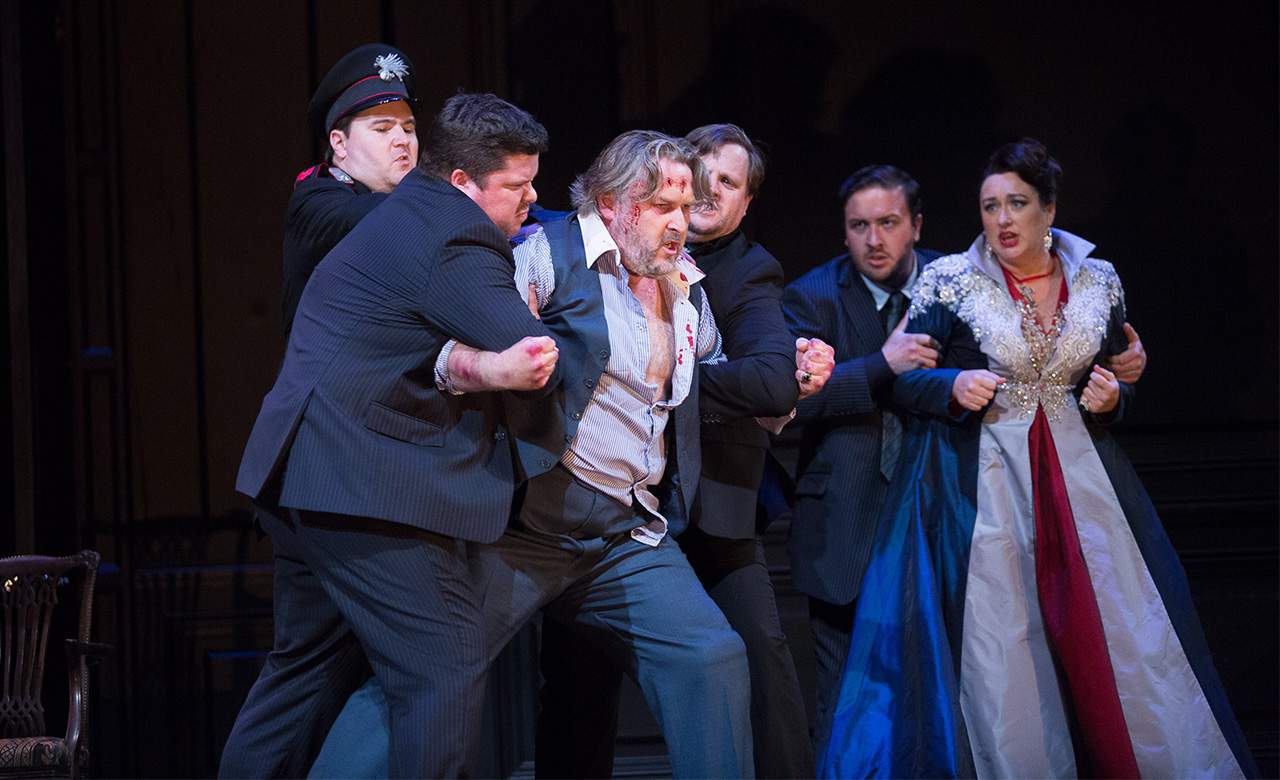Tosca
New Zealand Opera delivers a powerful blow with a tale of lust, jealousy and revenge.
Overview
Puccini’s Tosca is one of opera’s most enduring works, finding instant favour with it’s debut audience in 1900 who demanded no less than 5 encores and 21 curtain calls. Despite continued popularity, Tosca was not always the critical darling – the scandalous blend of sex, sadism, religion and art may have been a considerable factor. Tosca was panned as a poor version of the original play, a sentiment not shared by the author Victorien Sardou who felt the opera elevated the source material.
Originally set in Rome on the cusp of the Napoleon invasion, New Zealand Opera has lifted the work to post-World War II Italy. In the depths of the Cold War, foreign interests and the Catholic Church are asserting their power, while the ruling Christian Democratic party are stifling the lingering communist factions. It is a time of suspicion, terror and corruption - the ideal climate for Puccini's Tosca. Grandiose and sparse, the set design wonderfully reflects the post-communist era, particularly in the prison compound of the third act. While Tosca is already an accessible opera exemplified by it’s concise cast and fast paced storytelling, setting the production in modern history increases plot cognition and allows the audience to focus their attention on the outstanding performances.
Celebrated Kiwi singer Simon O’Neill sends shivers as Mario Cavaradossi, painter, political rebel and lover of Rome’s famous singer Floria Tosca. O’Neill’s vocal power is matched by Orla Boylan, who last performed for the NZ Opera during the 2013 season of The Flying Dutchman. Boylan’s delivery of the famous diva, passionately in love, but still plagued by pangs of jealousy leads to some of the lighter moments in the first act, as the lovers quarrel over the female subject who has inspired Cavaradossi’s commissioned portrait of the Magdalene.
As in any tragedy, love must be met with a destructive force. New Zealand’s own Phillip Rhodes takes on the dastardly Baron Scarpia, enforcer of the law with an iron fist and his band of lackeys. Rhodes relishes in the performance, giving life to the conniving Scarpia as he entertainingly plans to ignite Tosca's jealousy and tear the lovers apart. Supported by the Kiri Te Kanawa Foundation, Rhodes is absolutely one to watch.
The performance is given depth through the live orchestra conducted by Tobias Ringborg, coaxed back to New Zealand after leading NZ Opera’s previous production of Puccini’s Madame Butterfly. The interactions and arias which bounce between the three leading characters in this tightly wound production inspires intense engagement with the stage. As the inevitable unravels, it is impossible not to feel hit by the emotional highs and catastrophic lows which have kept audiences engrossed for over two centuries.





